One of the most frustrating issues you can face either out of the blue or after you have just assembled your new PC is that the computer turns on, but no display is shown on the monitor.
This article will be a comprehensive guide on fixing the dreaded blank screen issue. This problem is sometimes difficult to fix because
This problem is sometimes difficult to fix because it can be caused by almost anything. It could be caused by an issue as simple as a malfunctioning cable or as dreadful as a dead motherboard or CPU.
I will discuss everything that can cause or fix the blank screen issue in the following text.
27 Fixes for “Computer Turns On But No Display”
The idea here is that you should try to attempt all the more straightforward fixes before you conclude that something more serious, such as a dead motherboard, could be causing the: computer turns on, but no display issue.
1. Restart Your PC
Let’s start with the most straightforward suggestion first. You can go ahead and try restarting your PC.
An excellent way to reboot your PC is to shut it down first. You may also want to remove the plug from the wall socket entirely for 10-15 seconds.
Sometimes a PC component crashes, and a simple restart can revive it back into action.
2. Check The Monitor’s Power Cable
This is yet another reasonably simple fix.
Could you check that the monitor’s power cable is connected and receives power from the wall socket?
Often monitors have indicator lights indicating whether it is receiving power or not.
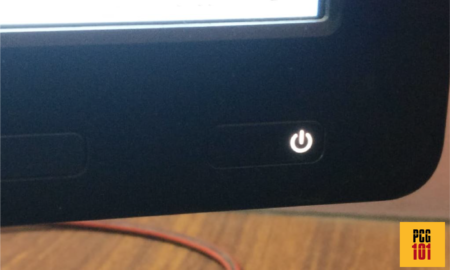
Suppose your monitor does not have a power indicator light. In that case, you will need to try changing the power cable and plugging the cable into a different wall socket to rule out any possibility of your monitor not receiving power.
3. Check or Replace the Video Output Cable
A defective video output cable such as an HDMI, VGA, or DVI cable is a common cause of no display or blank screens.
As such, verifying whether your video cable is dead should also be among the first fixes you should explore.
The easiest way to fix this would be to replace the video output cable with a newer one. You could also borrow a cable from your friend to see if the issue is with the cable.
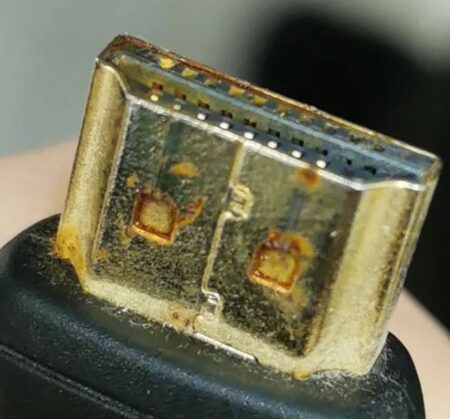
4. Connect to a Different Video Output Port
Another reasonably simple fix is to try a different video port altogether. So if your monitor is connected to HDMI ports, try using the DVI, VGA, or DP ports.
The monitor and the PC often have multiple video output ports of different types.
5. Check Your Monitor with Another PC
It would be wise to check it with a different PC to eliminate once and for all if the issue lies with the monitor or the PC.
If you have already checked and confirmed that the monitor’s power and video output cables (HDMI, VGA, DVI cables) are working correctly, then the final suggestion would be to check your monitor on another PC.
If you have another PC lying around or could call a friend to bring his PC/Laptop over, you can quickly pinpoint where the issue lies, i.e., with the monitor or with the PC.
If your monitor works fine on another PC and can successfully show display, then the problem lies with your PC and its hardware.
Also Read: Why are Games Not Using GPU?
6. Your Graphics Card is Not Plugged in Properly (For PC with Dedicated GPU)
If you have a dedicated graphics card as your primary GPU for video output, could you ensure it is plugged into the PCIe slots properly?
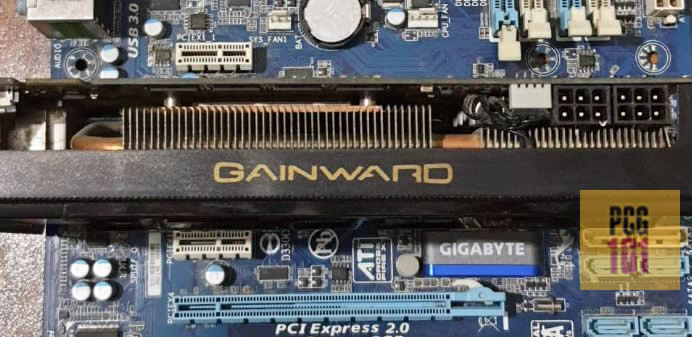
When you plug a dedicated graphics card into the PCIe x16 slots, there is often a distinct clicking sound from the clip/latch at the end of the slot.
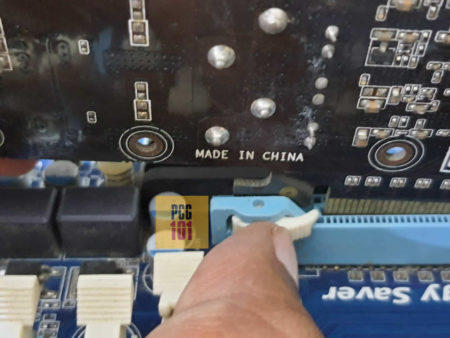
The graphics card must be firmly locked so no loose pins exist.
7. Dust Off and Clean Your Dirty PCIe Slot (For PC with Dedicated GPU)
If you have an old motherboard or have yet to perform regular PC maintenance, the accumulated dust can open a can of worms of potential issues for your PC.
As such, if your display were working properly but suddenly started showing no screen, then good advice would be to thoroughly clean your system, particularly the PCIe x16 slot intended for the graphics card.
You may even have to remove the dedicated graphics card to clean the PCIe x16 slot thoroughly.
8. PCIe Power Cables are Not Plugged into Your Graphics Card (For PC with Dedicated GPU)
A significant culprit for the computer turning on but no display, particularly for fresh builds, is that you may still need to plug the PCIe power cables into your dedicated graphics card.
Lower-Mid to High-End graphics cards is power hungry devices. They must be plugged with dedicated PCIe power cables from the power supply unit.
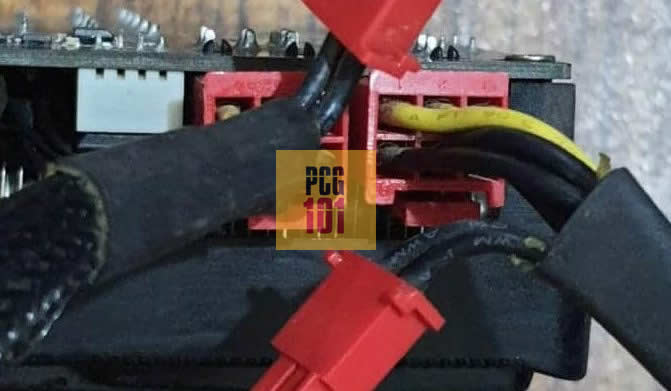
You HAVE to plug in ALL the graphics card’s power connectors for it to work.
If the graphics card does not receive power, it will simply not output any display. Simple as that.
Also Read: What are PCIe Power Cables?
9. Plug the Graphics Card into a Different PCIe Slot (For PC with Dedicated GPU)
Staying with the theme of the dedicated graphics cards, try plugging your graphics card into a different PCIe x16 slot.
The PCIe x16 slot currently populated with the graphics may be defective or unsuitable for the graphics card (it does not have enough PCIe lanes, read next point).
Also Read: How to Check if PCIe Slot is Bad?
10. Graphics Card is Not Plugged Into the Right x16 Slot (For PC with Dedicated GPU)
This is a very rookie mistake that many new PC builders make.
If your motherboard has multiple PCIe x16 slots, they are only suitable for a graphics card.
A dedicated graphics card requires an x16 slot with full 16 PCIe lanes. However, sometimes an x16 slot on a motherboard may only offer 4 PCIe lanes.
Take a look at the following motherboard Gigabyte GA-P67A-UD3 motherboard.
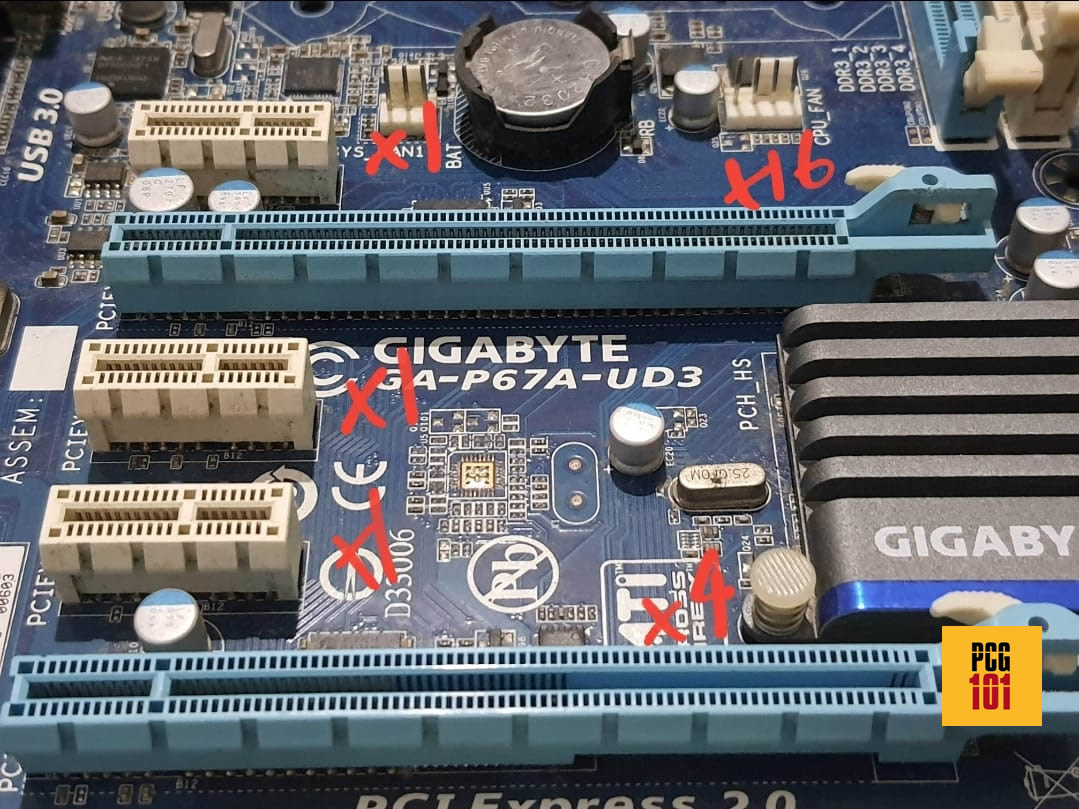
You can see here that this motherboard has two PCIe x16 slots; however, only the top slot features the full 16 lanes and thus is ideal for the graphics card.
If I were to plug the graphics card into the second (bottom) PCIe x16 slot, my graphics card would not work. This would mean that any monitor connected to it would show a blank screen.
So an easy fix is to always use the first PCIe x16 slot as a rule of thumb for your dedicated graphics card.
Also Read: Computer Not Starting After Installing New Graphics Cards – How to Fix?
11. You Are Using Motherboard Video Output Ports on a PC with a Dedicated Graphics Card
On a PC with a dedicated graphics card, you will have video output ports such as HDMI/DP/VGA/DVI ports on the motherboard I/O panel and your graphics cards.
However, if a dedicated graphics card is installed on desktops, this usually disables the video output ports on your motherboard.
Therefore, if your video output cable is connected to the motherboard’s video output port, you will not get any display.
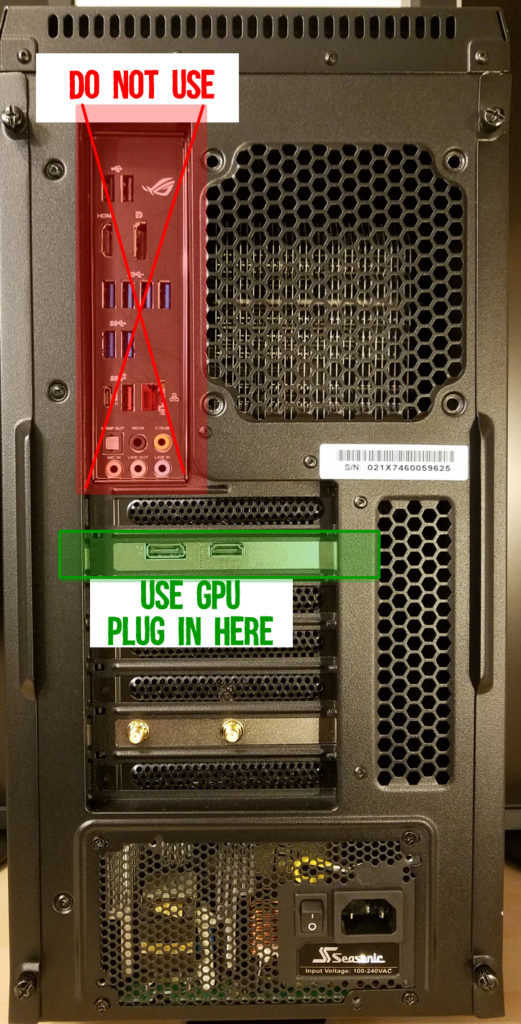
In other words, on a PC with a dedicated graphics card, use the video output ports on the graphics card, NOT the motherboards.
12. Check that the CPU is Installed Correctly
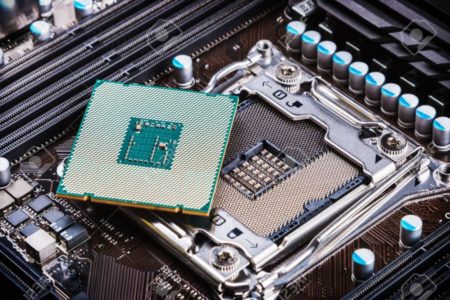
Moving onto the CPU, could you check that the CPU is installed correctly? This is again a problem seen with a freshly assembled PC.
Often the LGA (land grid array) based CPU primarily used by Intel CPUs has to be positioned very carefully with the socket of your motherboard and then locked and latched in with a lever on the side of the socket.
If the pins of the CPU do not align correctly with the motherboard’s socket, this can cause a system-comprehensive malfunction, including a blank screen.
In this case, your motherboard would turn on, but it does not surpass the essential POST function.
Also Read: Will Motherboard POST Without CPU?
This is usually not an issue with Pin Grid Array (PGA) CPU since they slide right into the motherboard socket, so there is no worry of misalignment. AMD uses PGA for its commercial CPUs.
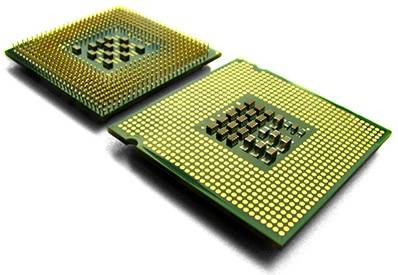
Also Read: LGA vs. PGA
13. Make Sure There are No Bent Pins on the CPU
This is a difficult pill to swallow, but it must be mentioned. While unlikely, you may have bent pins on your CPU.
This is often an issue with PGA-type processors (AMD CPUs), whereby the slightest force or nudge can bend the pins of the CPU rendering the entire system inoperable. This, in the end, could result in a blank screen, but your motherboard and fans may turn on.
I know this sounds like a complicated diagnosis for what seems to be a simple issue, and I hope this is not the case for you, but it must be considered.
Please feel free to look into this when you have exhausted the other fixes and causes in this guide.
14. Make Sure that CPU and Motherboard Power Cables are Plugged In
Again a straightforward fix. It’s often considered a rookie mistake; you must ensure the CPU and motherboard cables are plugged in.
The 24 Pin ATX connector for the motherboard and the 8-pin connector for your CPU comes from the Power Supply Unit.
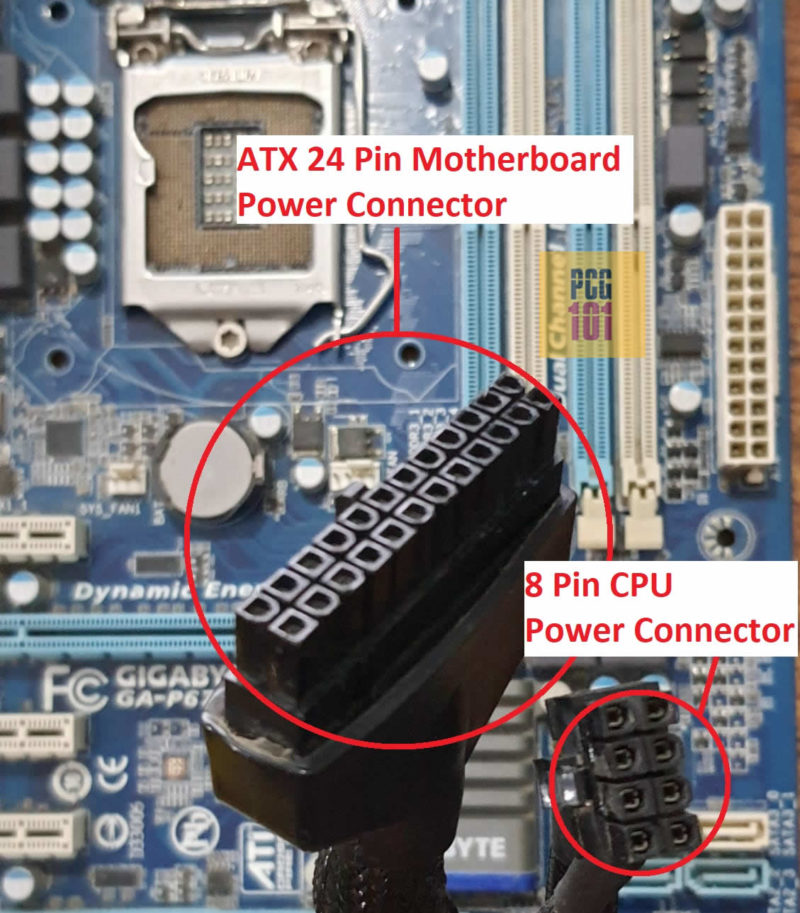
Also, please ensure that the pins’ orientation is correct!
The pins have notches of different sizes and sizes and shapes to ensure that you don’t plug them the other way around.
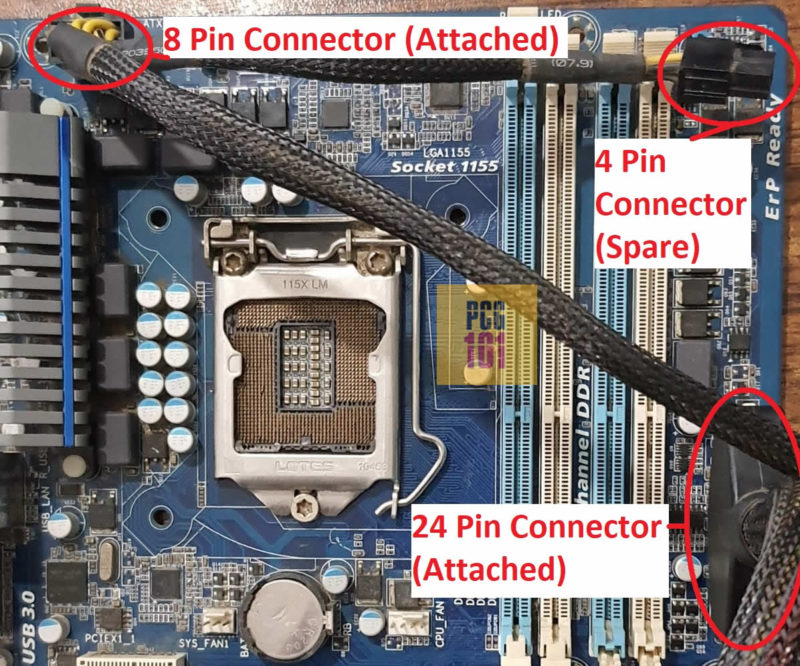
So to reiterate this critical point. The CPU and the motherboard plugs MUST be oriented correctly.
15. Your CPU Does NOT Have an Integrated Graphics Card
You may have been using the wrong ports or built your PC incorrectly.
So here is the thing. If you are using your motherboard’s video output ports for display and you DO NOT have a dedicated graphics card installed, then you need an integrated graphics card.
If your CPU does not have an integrated graphics card, then the video output ports on your motherboard will NOT work, and you will be forced to invest in a standalone dedicated graphics card for video display.
The Intel “F” series CPUs, such as the Intel Core i5 12400F, LACK an integrated graphics card.
With AMD, only the “G” series CPUs, such as the AMD Ryzen 3 3200G, offer an integrated graphics card.
16. Make Sure the CPU Isn’t Overclocked
An overclocked CPU is an issue that can cause a maelstrom of problems for your PC, and a blank display could be the least of your worry since an ill-informed overclock can even fry your CPU entirely.
You can check if your CPU is overclocked using several methods, including Task-Manager, to check if it operates beyond its rated clock speed.
The easiest fix is to revert the BIOS settings to default, which brings me to the next point.
Also Read: How to Check if CPU is Overclocked?
17. Reset BIOS by Clearing CMOS
Resetting BIOS can solve many issues, particularly related to lousy hardware installation.
It is also the best solution to fix issues with an overclocked CPU.
In addition, if you recently changed BIOS settings, that could also lead to hardware issues and thus show no screen.
Hence, it is always wise to reset the CMOS, bringing the BIOS settings back to default.
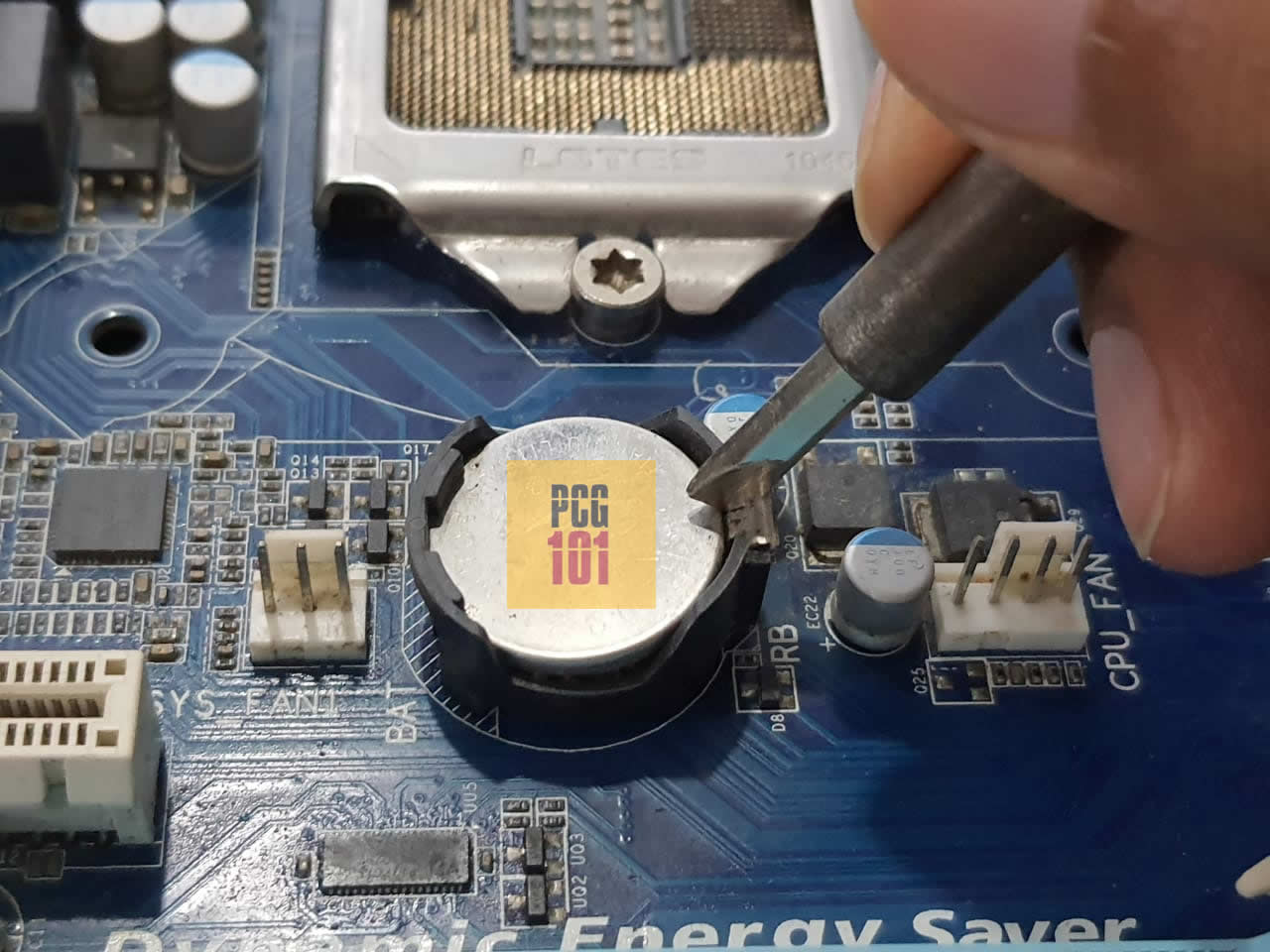
The best way to do this is to take the CMOS battery out of its slot and wait 10-15 seconds before plugging it back in.
Also Read: How to Reset Motherboard?
18. The CMOS Battery is Dead
Closely following in with the previous point, it is also possible that your CMOS battery is dead.
This can happen with new builds as well as with pretty old motherboards. Sometimes a new motherboard is shipped with a dead CMOS battery.
A dead CMOS battery will NOT let your motherboard go past the basic system checks or POST. Hence, you will get no display while your motherboard turns on and the fans start spinning.
The CMOS battery is a coin-cell battery CR2032 if you want to buy a replacement.
19. You Have Performed a Bad BIOS Update (Bricked Motherboard)
One of the worst things you can do is perform a bad BIOS update.
If your system crashed or the power went off during a BIOS update, you have performed a bad one.
This, in turn, will brick your motherboard. A bricked motherboard is a term used to define a motherboard rendered no more helpful than a brick due to a bad BIOS update.
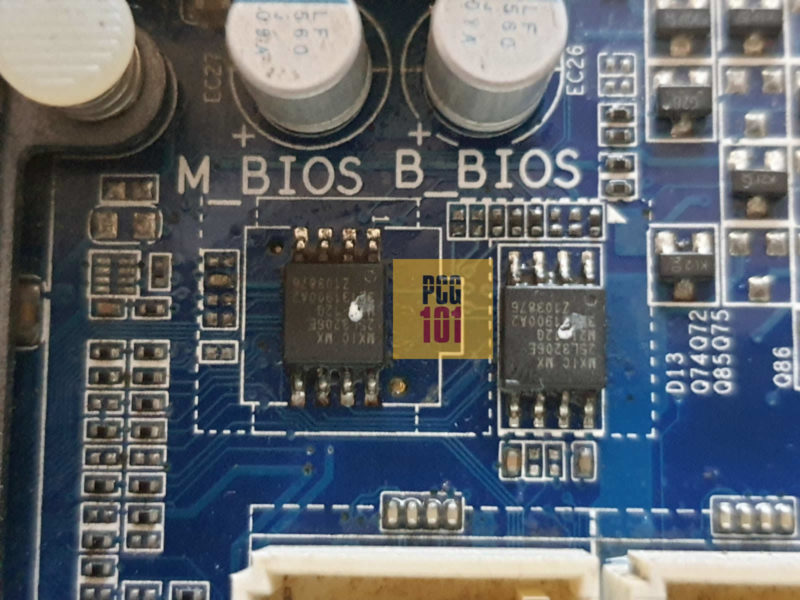
Unfortunately, there is no easy fix to a bricked motherboard, and in many cases, you may have to send it out to the manufacturer or get the BIOS chip replaced (which is a pain).
Power surges can also cause the BIOS chip to get fried. Some motherboards have a redundant chip for BIOS precisely for this reason.
Read in Detail: What is a Bricked Motherboard?
20. Check if The RAM is Plugged in Properly and Also the Slots
Another reasonably simple fix is to check that the RAM sticks are plugged in correctly. If it is plugged in properly, it can also pay off to remove them, give the RAM sticks and the RAM slots a good dust off and plug the sticks back in.
Additionally, you can plug the RAM sticks into a different slot. If you have two RAM sticks, you can test them by turning on the PC with just one RAM stick and trying each one, in turn, to verify if the problem lies with the RAM sticks or the slots.
21. Listen to the Beep or Get a Beep Code Speaker
If you have connected a beep code speaker to your motherboard, listen to its number of beeps.
A beep code speaker is often built into the PC case. Alternatively, you can also procure one separately:
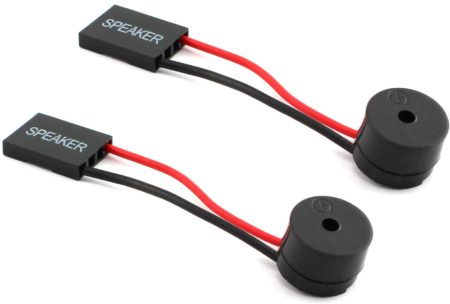
A beep code speaker is plugged into the motherboard front panel connectors:
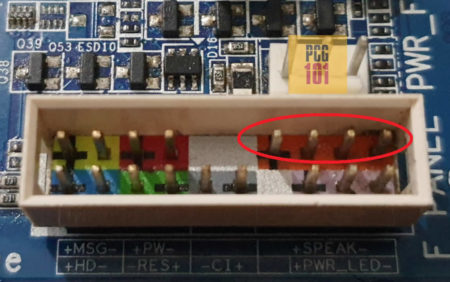
Also Read: How to Connect Beep Code Speaker?
The number of beeps and their duration can indicate where the problem lies (if the problem is with the hardware). For instance:
- One short beep: issues with RAM
- Five short beeps: issues with CPU
- One long beep, two short beeps – issues with Graphics Card
This article lists all the beep codes and their corresponding meaning.
22. Check Out the LED Lights on the Motherboard
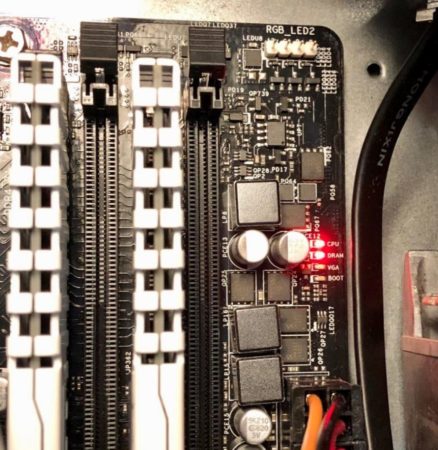
If your motherboard turns on, but flashes LED lights, that could mean a problem with the hardware.
Most of the time, the LEDs are self-explanatory. For instance, if the LED labeled “VGA” is on, the issues lie with the graphics card (you can follow the previous points on graphics cards).
Other times, the LEDs could be more explanatory, and you may have to refer to the motherboard’s spec sheet to deduce their meaning.
The point is that you will need to address the flashing LEDs as they indicate an underlying issue.
Just so you know, not all motherboards have LED indicator lights.
23. Remove All Connected Peripherals and Cards (Have the Bear Minimum Installed)
This can also be an easy fix. Sometimes hardware can conflict with a driver or with another hardware.
So, could you try removing all the peripherals first? So if you have any connected flash drives, scanners, printers, etc., then remove them. Once removed, you can restart your PC and see if that fixes the issue of the computer turning on but with no display.
If removing the peripherals does not work, remove the internal hardware so that only the bare minimum is connected. In other words, connect a single RAM stick, CPU, and power.
To remove internal components, ensure your PC is turned off, the power plug is removed from the wall socket, and you have discharged static by tapping both hands on the PC case.
You can leave the dedicated graphics card in if your CPU does not have an integrated GPU (Refer to points #10 and #14).
Besides that, remove everything, including your non-bootable hard drive (the hard drive that does not contain the OS) and any other PCIe device, such as a WiFi card, port expansion cards, etc.
Once removed, try turning your PC on and see if that fixes the issue.
If removing the devices did fix the issue, then one of the devices or the slot it was plugged into could have been causing the issue.
Try plugging each device back in one by one to figure out the problematic component. Once the component is identified, before discarding it as defective, try plugging it into a different slot to see if the slot is not the culprit in the first place.
24. Test The Power Supply Unit
This fix is a bit more tedious compared to others.
Your Power Supply Unit may be either defective or malfunctioning.
There is no other definitive way to check whether your PSU is functioning correctly or not other than to check with a different system.
So if you have a second PC or if you could ask your friends for assistance, you can get the PSU checked fairly easily.
Of course, the hassle involved is that you would need to disassemble your PC case and remove the PSU.
25. Your GPU is Dead or Defective
I wanted to keep the more dreadful fixes/causes towards the end of the article because the last thing you want to hear is that you have a bad GPU, CPU, or Motherboard.
You can verify this by first plugging the GPU into another PCIe slot (make sure it is at least x8; refer to point #10).
If you do not have a second x16 slot with at least x8 bandwidth, try it on a different PC to see if it works.
If it also does not work on another PC, you probably have a defective GPU.
You can also try a different video output port on the graphics card before discarding your GPU as defective.
26. Your CPU is Dead or Defective
A bad CPU can cause many problems, including no display or a black screen.
You can check your CPU by testing it on a different motherboard, but the motherboard you test it on will also need to be of the same socket.
I have written a comprehensive article on how to tell if a CPU is bad or dead.
27. Your Motherboard is Dead or Defective
Equally as dreadful as the previous point is that you may have a bad motherboard.
I have also written a comprehensive article on this topic: How to Tell if Motherboard is Bad or Dead?
Final Words
So this article summarizes 27 fixes/causes for the common issue: the computer turns on but has no display or black screen.
As you can see, some are fairly quick and easy fixes, whereas others are tedious and heartbreaking (bad CPU or motherboard).
I hope this resource was helpful in your endeavor to figure out where the problem lies. Please enlighten me in the comments below if I missed a fix/cause.
Frequently Asked Questions
1. Can a power supply issue cause a computer not to start after installing a new graphics card?
Yes, a power supply issue can cause a computer not to start after installing a new graphics card. Graphics cards require a certain amount of power to function properly, and if the power supply is insufficient or faulty, it can cause the computer not to start.
2. How do I know if my new graphics card is compatible with my computer?
To determine if a new graphics card is compatible with your computer, you should check the specifications of your computer’s motherboard, power supply, and case to ensure that the graphics card you are considering will fit and function properly. You can also check the graphics card manufacturer’s website for compatibility information.
3. Should I update my computer’s drivers after installing a new graphics card?
Yes, you should update your computer’s drivers after installing a new graphics card. This will ensure that your computer is using the latest software and drivers to communicate with the graphics card, and can improve performance and stability.
4. What is BIOS and how can it affect my computer’s ability to start after installing a new graphics card?
BIOS (Basic Input/Output System) is a firmware that initializes the hardware components of your computer when you turn it on. It also provides a configuration interface for adjusting system settings. If the BIOS is not configured properly for the new graphics card or is outdated, it can cause the computer not to start or function properly.
5. Do I need to replace any hardware if my computer is not starting after installing a new graphics card?
It depends on the cause of the problem. If the issue is related to compatibility or drivers, you may not need to replace any hardware. However, if the power supply is insufficient or faulty, you may need to upgrade or replace it.
If the motherboard is not compatible with the new graphics card, you may need to replace it as well. It’s best to troubleshoot the issue to determine the exact cause before replacing any hardware.
